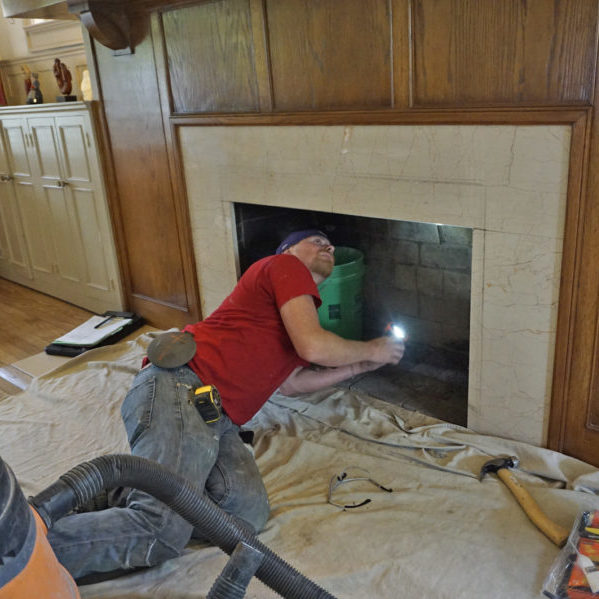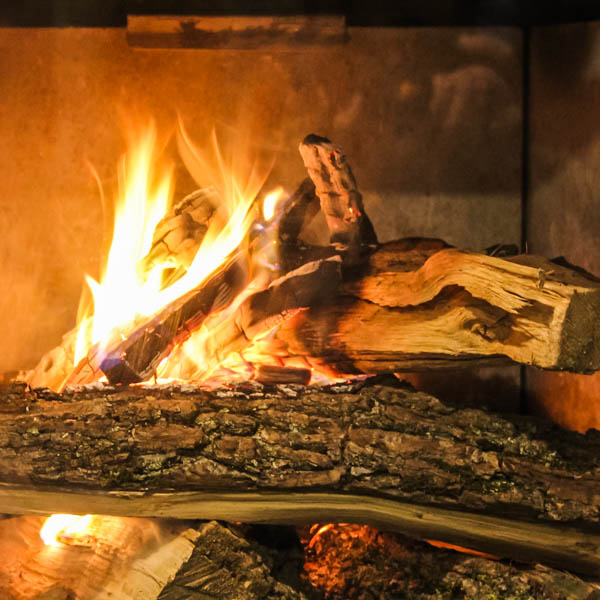How to Start a Fire In Your Fireplace Safely
Is your fireplace safe to light? It is common for folks to be hesitant about lighting the fireplace for the first time after several months of dormancy. Especially when all it takes is a gust of wind blowing across your roof to put a damper on your fire, it can also be dangerous. However, you can breathe a sigh of relief because, in this article, we’ll explain how to safely start a fire in your fireplace.
 Get a Chimney Inspection and Cleaning
Get a Chimney Inspection and Cleaning
If you haven’t done so, a professional chimney sweep must inspect and clean your chimney before starting a fire in your fireplace.
The biggest concern is creosote buildup leftover from the last time you burned wood in the fireplace. Creosote is a natural byproduct of combustion. It becomes increasingly flammable the longer it remains in your chimney.
All it takes is a flying hot ember to spark a chimney fire that can quickly spread to your roof and the entire house. Failure to properly clean the chimney is cited as the primary cause of residential fires, according to the National Fire Protection Association (NFPA).
Prepare the Firebox
Next, you will need to clean the firebox. Your fire will burn more efficiently if you keep ashes from piling above the grate. So cleaning the firebox of your wood burning fireplace should be a regular practice when you light it frequently to keep your home warm and comfy. It also makes it more readily accessible when the chimney sweep arrives to perform the inspection. After cooling the fireplace for 12 to 24 hours, take out the grate and sweep the ashes into a metal container. There are many ways to recycle ash, but reserve some for the firebox floor. A thin 1-inch layer under the grate will help start your fire. Now, clean the firebox wall and floor with some mild detergent and water. You might need to use some “elbow grease” to scrub tough stains. You can pick up some accessories at our showroom at 857 Hwy 36 in Burlington, WI. Finally, clean the grate before putting it back in the fireplace. It can be messy, so you may want to clean it outside.
Open the Damper
The damper controls the airflow inside the flue. Remember to open the damper before lighting the fireplace. Otherwise, a dangerous backdraft can push smoke and fumes into your living space. After the fire burns out completely, it is safe to close the damper to prevent the heat from going out of the chimney.
Warming Up a Cold Chimney
When you wake up in the morning or return home after work, your chimney may be as freezing as you are outside on a cold winter day, especially when the temperature is below zero. Warming up the flue will help prevent a backdraft or back puffing. Lighting one end of rolled-up newspaper and holding it under the flue will warm up the chimney. Then, when you feel the draft reverse and the smoke rising, it is safe to light the fireplace.
 How to Safely Build a Fire in Your Fireplace
How to Safely Build a Fire in Your Fireplace
Here at Burlington Fireplace, we like to use what is known as the “log cabin” method. It’s an easy, safe, and foolproof way to build a brilliant fire that will burn for hours.
- Arrange two small logs of “seasoned” firewood about a half-foot apart on the bottom of the grate. They should be parallel to the firebox.
- Add your kindling in the space between both logs.
- Now stack two slightly larger logs on top perpendicular to the bottom row.
- Finally, add two larger logs on top of the second layer, perpendicular to the logs underneath.
- Light the kindling with a large matchstick or fireplace lighter. Please do not use an accelerant such as lighter fluid, as it can cause an explosion.
- Congratulations! You just built a stunning fire that will make your home warm and inviting during the holiday season.
Racine WI Chimney Inspection & Cleaning Services
Before you light the first fire of the winter season, call Burlington Fireplace at 262-763-3522 to schedule a professional chimney inspection and cleaning. Our chimney sweeps will ensure your chimney, flue, and fireplace are safe to operate. We serve customers in Burlington, WI, Walworth, WI, Greenwood, IL, Antioch, IL, and surrounding communities in southern Wisconsin and northern Illinois. You can also contact us online.
